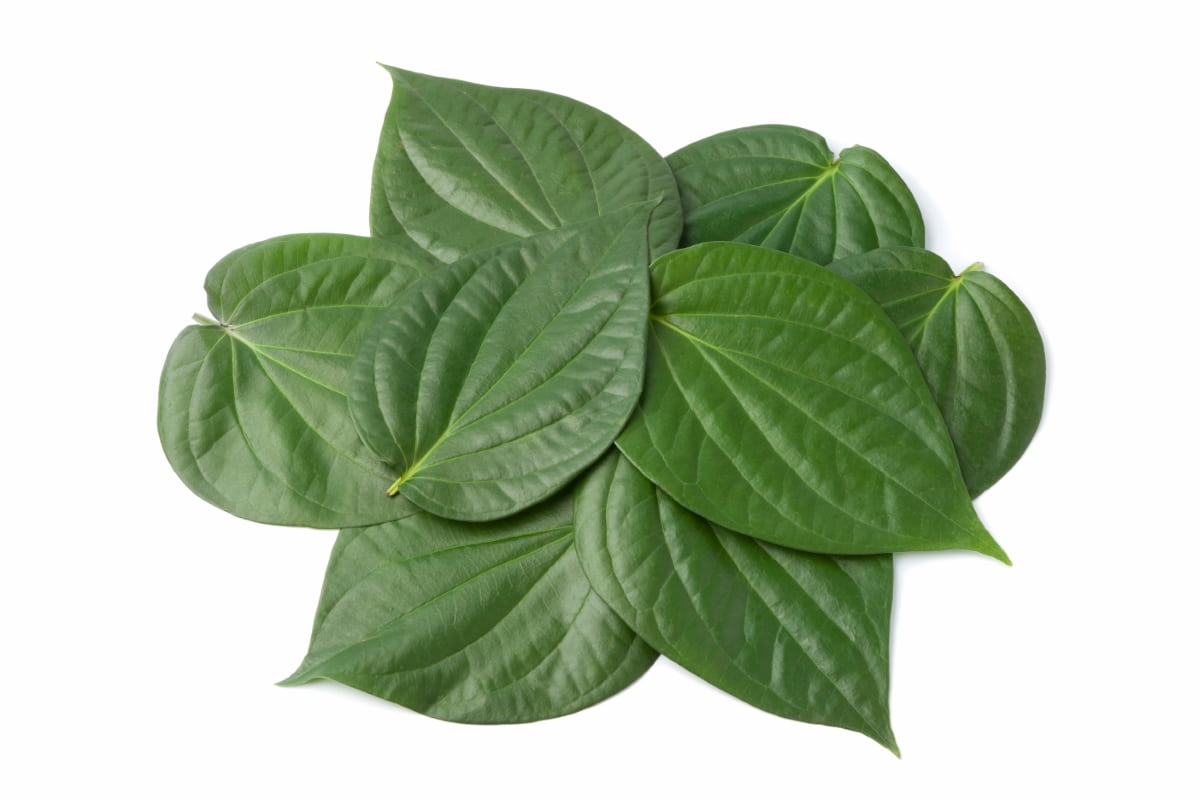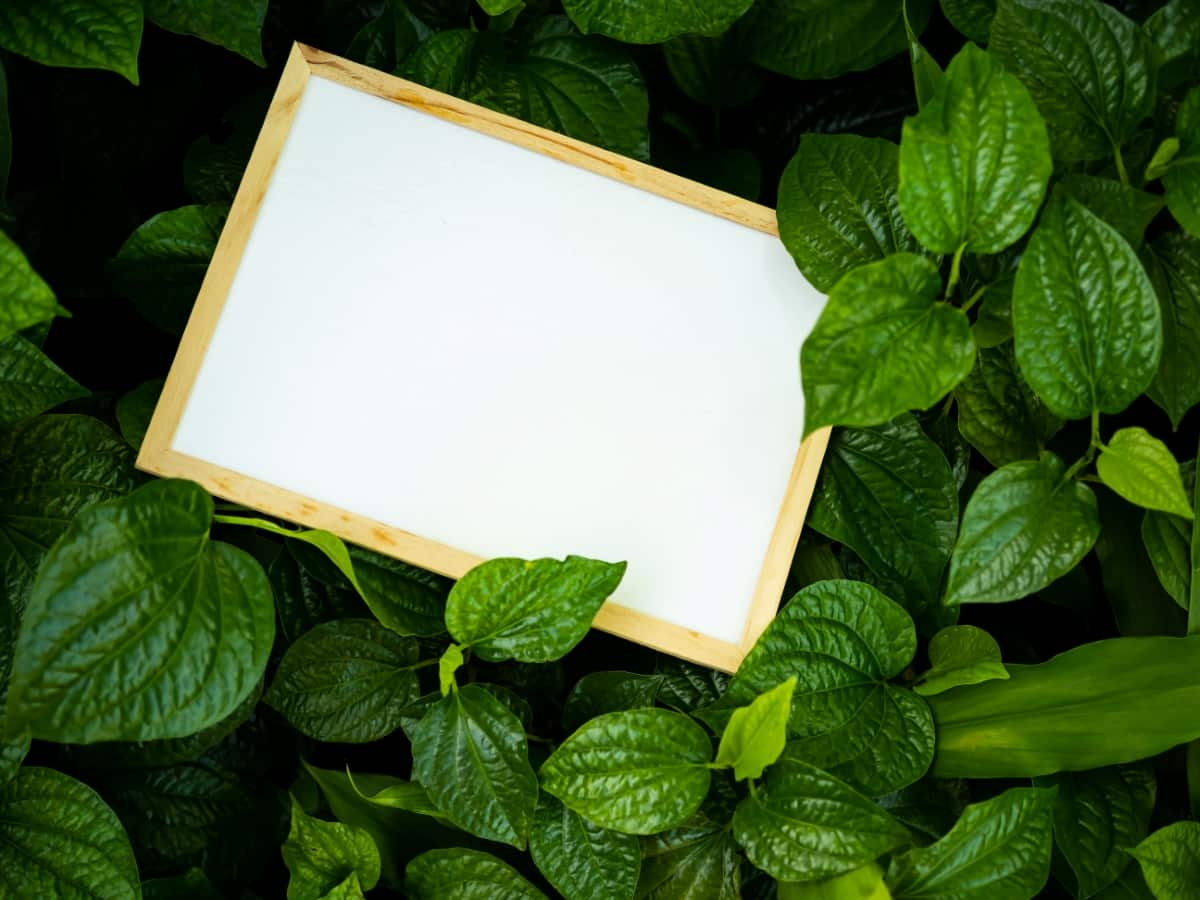Whether you’re cultivating betel leaves for personal consumption, commercial purposes, or cultural practices, enhancing the yield is a common goal. To achieve a bountiful harvest, it’s crucial to employ proven and practical techniques that optimize the growth conditions for betel leaf plants.

This guide will explore various strategies to increase betel leaf plant yield, ranging from soil preparation and nutrient management to pest control and proper harvesting techniques. By implementing these methods, you can promote healthier plants, higher leaf production, and improved crop yield.
How to Increase Betel Leaf Yield
Selecting the Right Location
Choose a location with filtered sunlight to boost betel leaf plant yield, as betel plants thrive in partial shade. Ensure well-draining soil rich in organic matter, maintaining a slightly acidic to neutral pH (5.8-6.5). Adequate spacing between plants promotes air circulation, preventing diseases. Regularly water the plants, keeping the soil consistently moist but not soggy.
Fertilize with a balanced, slow-release fertilizer every 6-8 weeks during the growing season. Mulching helps retain moisture and suppress weeds. Prune regularly to encourage branching and fuller growth. Selecting an optimal location and providing proper care will enhance betel leaf yield.
Proper Soil Preparation and Nutrient Management
Enhance betel leaf plant yield through precise soil preparation and nutrient management. Begin by cultivating well-draining soil rich in organic matter. Aim for soil pH ranges between 5.8 and 6.5. Prioritize incorporating compost or well-rotted manure for fertility. Perform a soil test to determine nutrient levels, addressing deficiencies with targeted fertilizers.
Opt for a balanced, slow-release fertilizer for sustained nutrition throughout the growing season. Apply fertilizer during planting and supplement every 6-8 weeks. Mulching aids in moisture retention and weed control. Meticulous attention to soil quality and nutrient balance is key to promoting robust betel leaf growth and increased yield.
Optimize Watering Practices
Maximize betel leaf plant yield by optimizing watering practices. Maintain consistently moist soil, allowing the top inch to dry slightly between waterings. Implement a drip irrigation system or water at the plant’s base to minimize foliage wetness, reducing the risk of diseases. Adjust the watering frequency with respect to weather conditions, emphasizing increased water during hotter periods.
Apply a thick organic mulch layer to conserve moisture and regulate soil temperature. Avoid waterlogging, as betel plants are susceptible to root rot. Monitor soil moisture and adjust watering accordingly, ensuring a well-hydrated but well-drained environment for optimal betel leaf growth and increased yield.
Implement Pruning and Training Methods
Boost betel leaf plant yield through effective pruning and training methods. Encourage bushier growth by pinching off the tips of young shoots regularly. This stimulates lateral branching and increases foliage density. Remove yellow or damaged leaves promptly to redirect energy to healthier growth.
In case you missed it: Betel Leaf Farming in Greenhouses: Benefits and Best Sustainability Practices

Train the plant to a desired shape by selectively pruning long stems. Utilize trellises or support structures to guide vines and prevent overcrowding. Regularly thin out excessive growth to enhance air circulation, minimizing the risk of diseases. Pruning also aids in harvesting convenience. Implementing these practices will result in a well-shaped, vigorous betel leaf plant with increased yield and overall productivity.
Carry Out Integrated Pest Management (IPM)
Elevate betel leaf plant yield through Integrated Pest Management (IPM). Regularly inspect plants for pests, identifying them accurately to tailor control measures. Introduce natural predators like ladybugs or lacewings to mitigate pest populations. Neem oil, garlic spray, or insecticidal soap are organic options to deter common pests without harming beneficial insects. Rotate crops to disrupt pest life cycles and minimize infestations.
Remove and destroy severely affected plant parts promptly. Consider companion planting with pest-repelling herbs or flowers to create a pest-resistant environment. Implementing a holistic IPM strategy helps maintain a healthy balance, reducing the need for chemical interventions and promoting higher betel leaf yields while preserving the overall well-being of the plant.
Apply Organic and Inorganic Fertilizers
Enhance betel leaf plant yield by employing a balanced approach to fertilization, combining organic and inorganic fertilizers. During soil preparation, begin with well-rotted compost or aged manure to enhance organic matter and nutrient content. Supplement this with a controlled-release, balanced NPK (nitrogen, phosphorus, potassium) inorganic fertilizer to meet specific plant needs. Apply fertilizers during the planting and growing season, following recommended dosage guidelines.
Organic materials contribute essential micronutrients and improve soil structure, while inorganic fertilizers provide readily available nutrients for immediate uptake. Regular soil testing ensures precise nutrient management. This hybrid fertilization strategy promotes robust growth, boosts productivity, and sustains the overall health of betel leaf plants for increased yield.
Utilize Mulching Techniques
Optimize betel leaf plant yield by implementing effective mulching techniques. Apply an organic mulch, like straw or vermicompost, around the base of the plants to retain soil moisture, suppress weeds, and regulate temperature. Mulching helps prevent moisture loss, ensuring a consistently moist soil environment crucial for betel leaf growth.
In case you missed it: Frequently Asked Questions About Betel Leaf Farming

Additionally, it reduces competition from weeds, allowing the betel plants to access nutrients more efficiently. Mulch also acts as a protective barrier, preventing soil compaction and erosion. Implementing these mulching techniques contributes to a healthier and more productive betel leaf plantation, ultimately increasing the overall yield of the plants.
Adhere to Proper Harvesting Techniques
Optimize betel leaf plant yield through proper harvesting techniques. Harvest mature leaves when they reach a suitable size, typically around 6-8 inches in length. Select leaves that exhibit vibrant green color and have a glossy appearance. Use sharp, clean scissors to make clean cuts, avoiding unnecessary damage to the plant. Harvest regularly, but avoid removing more than one-third of the plant at a time to ensure continued growth. Harvesting from the outer edges encourages new growth from the center. Time your harvests to coincide with the plant’s peak growth periods.
Enhance Pollination and Seed Setting
Elevate betel leaf plant yield by enhancing pollination and seed setting. Introduce pollinator-friendly plants nearby to attract bees and other beneficial insects, facilitating natural pollination. Gently shake the plants during their flowering stage to stimulate pollen transfer. If pollinators are scarce, consider hand pollination by transferring pollen between flowers using a small brush or cotton swab.
To encourage seed setting, allow some flowers to mature into seed pods. Provide adequate spacing between plants for air circulation, preventing fungal issues that may hinder seed development. By fostering optimal pollination conditions and allowing for seed setting, you promote robust plant growth, ensuring a bountiful betel leaf harvest and potential for future plant propagation.
Monitor Environmental Conditions
Regularly monitor environmental conditions to ensure optimal betel leaf plant growth and yield. Use a soil moisture meter to monitor hydration levels, maintaining consistent moisture without waterlogging. Employ a thermometer to track temperature, as betel plants thrive in warm conditions between 24-29°C. Utilize a hygrometer to measure humidity, aiming for levels around 50-80%. Monitor sunlight exposure, ensuring the plants receive filtered sunlight or partial shade.
In case you missed it: Best Fertilizers for Betel Leaf Plant to Get More and Bigger Bushy Leaves

Regularly inspect for signs of pests and diseases, addressing issues promptly. Adjust watering and fertilization based on seasonal variations. By staying vigilant and responsive to environmental factors, you create a conducive and stable growing environment, maximizing the betel leaf plant’s potential for robust growth and increased yield.
Conclusion
In conclusion, enhancing betel leaf plant yield involves a multifaceted approach. By combining these practical strategies, farmers can maximize yield and ensure a sustainable and prosperous cultivation of betel leaf plants.
- Feed Your Flock for Less: Top 10 Tips to Save on Chicken Feed
- Ultimate Guide to Ossabaw Island Hog: Breeding, Raising, Diet, and Care
- Hatching Answers: The Top 10 Reasons Your Chickens Aren’t Laying Eggs
- Eggs and Economics: Breaking Down the Cost of Raising Backyard Chickens
- Defend Your Greens: Proven Methods to Keep Iguanas Out of Your Garden
- Ultimate Guide to Cinnamon Queen Chicken: A Comprehensive Guide for Beginners
- Ultimate Guide to California Tan Chicken: Breeding, Raising, Diet, Egg-Production and Care
- Ultimate Guide to Marsh Daisy Chicken: Breeding, Raising, Diet, and Care
- 10 Types of Chicken Farming Businesses You Can Start for Profits